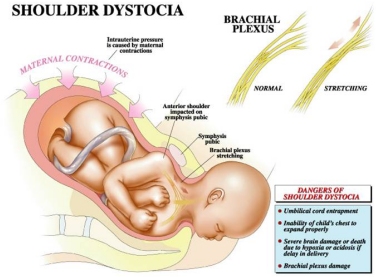|

Shoulder dystocia is an obstetrical complication that occurs in thousands of deliveries in the US each year. It has the potential for causing significant, lifelong injury to the newborns involved in such deliveries. Despite the hundreds of published studies on shoulder dystocia many important questions remain:
- Is shoulder dystocia predictable?
- Can it be prevented?
- When it does occur, can anything be done to decrease the risk of brachial plexus injury?
- If there is an injury, was it caused by mismanagement on the part of the physician while attempting to resolve the shoulder dystocia or was it an inevitable consequence of the dystocia?
By having thoroughly reviewed the published literature on shoulder dystocia and brachial plexus injury from 1965 to the present, shoulderdystociainfo.com presents comprehensive, reliable, and consistent answers to these important questions.
Table of
Contents
click on links to
view
- Introduction
to Shoulder Dystocia
- History
of Shoulder Dystocia
- What is
Shoulder Dystocia?
-
Pelvic Anatomy Related to Shoulder Dystocia
-
Incidence of Shoulder Dystocia
-
Recurrent Shoulder Dystocia
- Neonatal Injuries Following Shoulder Dystocia
- Can
Shoulder Dystocia be
Anticipated Accurately?
-
Are There any Strategies that can Reduce the Chances of a Shoulder Dystocia Occurring?
-
Can Shoulder Dystocia be Resolved Without Fetal Injury When It Does Occur? The Management of Shoulder Dystocia
-
Is all Brachial Plexus Injury Caused by Shoulder Dystocia and/or “Excessive” Physician Traction?
- Shoulder Dystocia Training
- Documentation
- Conclusions
- Bibliography
-
Shoulder Dystocia Registry
-
Contact Page
|